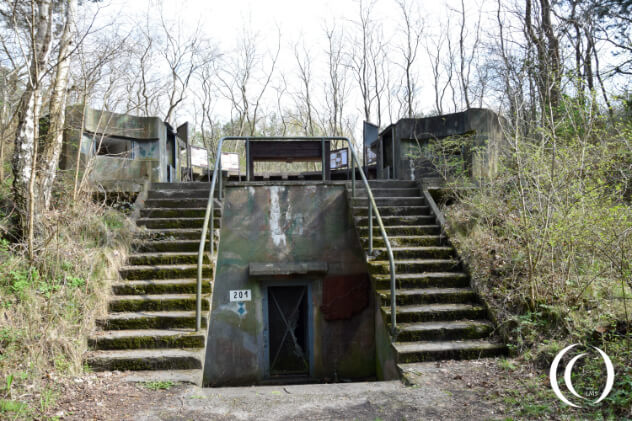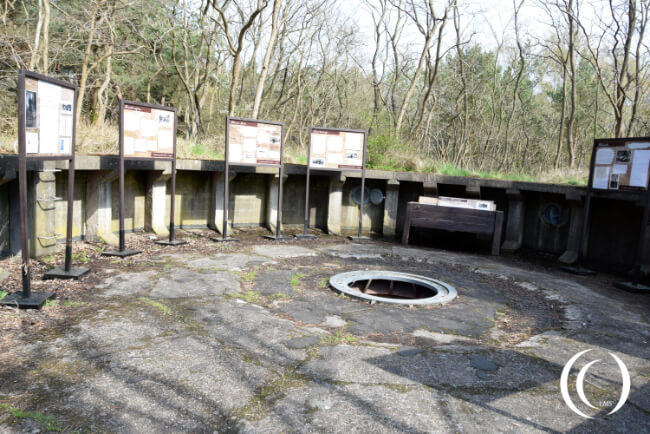

Prelude
The coastal batteries on Hel were among the strongest on Polish soil at the start of the Second World War. On September the first in 1939 the Germans invaded Poland. It was the first armed conflict of Germany, before they annexed the Rhineland, Austria and the Sudetenland without a shot fired.
In the Harbour of Danzig the battleship SMS Schleswig-Holstein floated as a guest, like a Trojan horse the battleship was disguised with a “ceremonial visit”. The Germans cleverly placed a fully armed pre-dreadnought behind the Polish defences.

The Battle of Hel
While the German forces crossed the Polish border, the Schleswig-Holstein released its fury at the Polish defenders on the Westerplatte, point blank and from the rear. Schleswig-Holstein fired the first shots of the war. When the Polish army got over their initial surprise, they put up a strong fight which raged on for days.


Invading German forces sealed off the Hel peninsula so they could march on to Danzig – Gdansk today. The Battle for the Westerplatte and the Battle for Gdansk were prioritized to the Battle of Hel. 2800 Polish soldiers fought on the Hel peninsula with their 152,4 mm gun batteries and very effective FLAK batteries. They were bombarded by battleships, BF109 Messerschmitt fighters and the feared Stuka dive bombers. The defenders shot down approximately 50 planes during the battle. The Polish navy joined in on the battle and lost some ships during this battle, three of them can still be seen on a beach of the peninsula. In the last part of the battle the Polish defenders blew up parts of the Peninsula making Hel an island.
Due to low morale and ammunition shortage the defenders surrendered after a struggle of 32 days on October the 2nd, They were amongst the last Polish forces to put down their weapons.

The Coastal and Flak Batteries
The Laskowski Battery is on the southern tip of the peninsula. Named after Heliodor Laskowski, he was the brains behind the defensive positions on Hel. The Battery had four 152,5mm Bofors Guns with a reach of 26 km. In close vicinity are more Batteries with 75mm Schneider Guns, Anti Aircraft positions and fire control towers.
A little more to the south was a Flak Battery with personnel quarters, designated “Batterie number 7”.




Hel in German Hands
After the Hel Peninsula fell into German hands the Kriegsmarine strengthened the peninsula even more with extra gun positions and radar. A Wurzburg Riese was built with three huge gun emplacements named Battery Schleswig-Holstein. Three 40.6 cm SK C/34 guns strengthened the Island for a short while, before the guns were transported to the Atlantic wall in France and placed in Battery Lindeman on the English Channel. The Wurzburg Riese position was used as the foundation for an observation tower after the removal of the radar itself.
The Germans used Hel’s naval base to train U-Boat crews. In the aftermath of the war the German forces in the village Hel on the peninsula were the last to surrender in Poland on the 14th of May 1945, six days after the capitulation of Germany.
Which is pretty particular, for the last of the Polish forces surrendered on the Hel Peninsula at the start of the war for Poland, and the last of the Germans surrendered on the peninsula in the last days of the second World War. It seems no one wants to give up Hel.




Visit
Just drive to the town of Hel, the batteries are mostly outdoors. We got a ride from some nice Polish locals in a golf cart. A service from a local hotel. The Hel peninsula has great beaches and lovely nature. Besides these batteries there are museums and other WW2 sites to visit.
Fantastic article, as always. Ive been to a few locations that you have recommended. Thankyou. Happy new year
Thank you sir
Weer een geweldig artikel! Interessant.
Dank je wel Alex